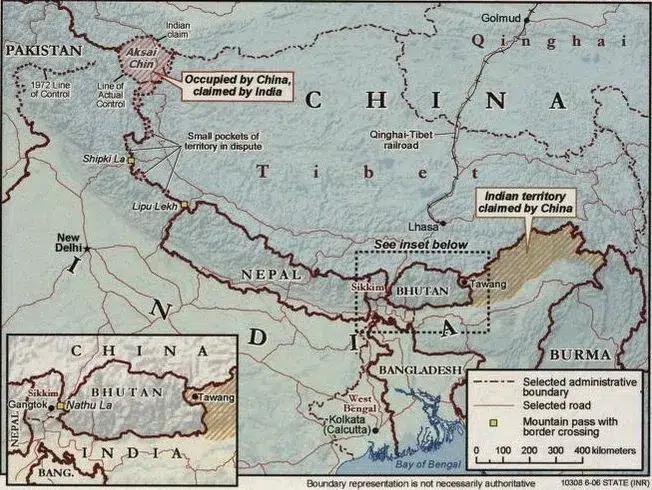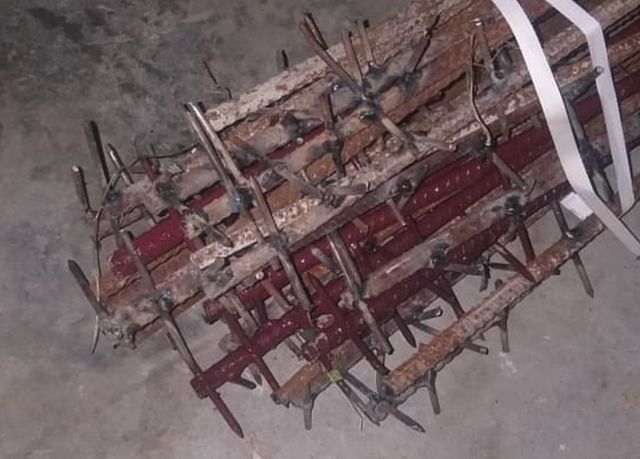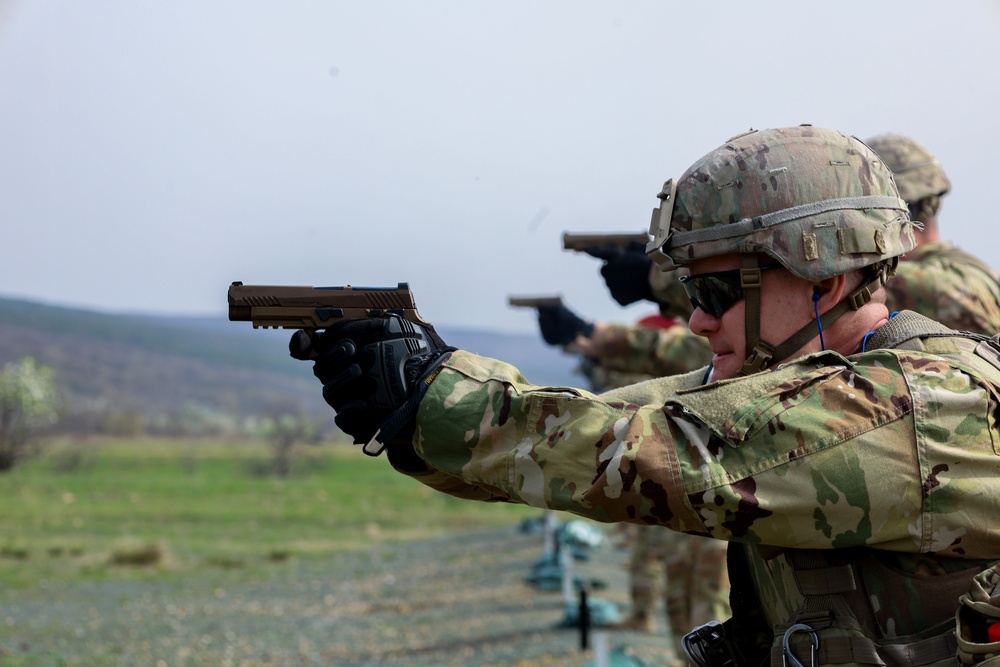These are the unique weapons used in the border clashes between China and India
- By Travis Pike
Share This Article

In the last few years, clashes between Indian and Chinese border guards have escalated along parts of their shared border. However, these clashes between China and India aren’t fought with modern weapons.
The two countries went to war in 1962 over their border disputes. Then, in a 1996 agreement known as the Line of Actual Control (LAC), they agreed that neither side can open “fire or hunt with guns or explosives within two kilometers” from a boundary called the line of actual control.
According to the agreement, they can’t use firearms, but that doesn’t mean they can’t have fistfights or fights with swords, axes, clubs, and more. Although shots have been fired, when this has occurred, both sides have immediately denied it as neither wants to be in violation of the agreement.
The beginning of the melee border clashes

In 2020, India was constructing a road in the area and the Chinese disputed it. Additionally, there had been allegations of the Chinese utilizing the salami-slicing technique of capturing land whereby they encroach on it little by little. This appears to be true as evidenced by Chinese pill boxes and fortifications that have been constructed near the border.
This began a series of border clashes between the two sides. The clashes began with a good old-fashioned fistfight and a little rock-throwing (which seems to be a better option than a shooting war). However, the soldiers were still outfitted in modern helmets and body armor so they were only a few injuries. Yet, the situation escalated quickly and the opposing forces began arming themselves with an assortment of melee weapons.
Related: Dragoons – The beginnings of modern mounted infantry
The border clashes escalate and become more brutal

On June 15, 2020, over 600 soldiers clashed in Galwan Valley. While the soldiers had rifles, they did not use them. Reportedly, the Chinese brought machetes, clubs embedded with nails, and batons wrapped with barbed wire. The violence involved a mix of purpose-built and improvised weapons including iron rods, collapsible batons, stones, and others.
Both sides suffered numerous dead, some due to injuries, but most due to falling over the mountainous regions and into a nearby river. Among the dead was the colonel commanding the Indian forces. Numerous soldiers were captured but released shortly after.
Related: China’s influence is growing exponentially in Latin America

Chinese soldiers have since been seen carrying pole weapons, specifically the Chinese guan dao. This ancient weapon features a long curved blade at the end of a pole that is often as tall as the soldier wielding it.
India responded by contracting an Indian company to produce a series of nonlethal, electrical weapons to arm its border guards. The company produced a pole weapon, resembling a trident, that emits an electrical shock from its tip. It also manufactured shock gloves that deal damage with grips, grabs, and punches.

The Next Step
In the future, we may see more traditional weapons being used by the two sides, including perhaps bows and arrows, and lances. While using fists and older weapons seems like a better alternative to guns and grenades, the men at the border being killed brutally likely don’t see it that way.
The border clashes seem that they will continue as China and India haven’t been too keen on quickly solving the issue. We’ll keep an eye on the situation and keep you informed if long swords and axes make an appearance.
Feature Image: Chinese and Indian soldiers during an altercation at the border.
Read more from Sandboxx News
- US warns China to not send weapons and ammo to Russia
- Blast exposure history could soon be part of troops’ medical records
- The Bowie knife – A historical fighting knife
- Modern Knife Fighting – The Marine Corps Way
- China conducted ‘influence operations’ through TikTok before US midterms, according to FBI director
Related Posts
Sandboxx News Merch
-

‘AirPower’ Classic Hoodie
$46.00 – $48.00 Select options This product has multiple variants. The options may be chosen on the product page -

‘Sandboxx News’ Trucker Cap
$27.00 Select options This product has multiple variants. The options may be chosen on the product page -

F-35 ‘Lightning’ Framed Poster
$45.00 – $111.00 Select options This product has multiple variants. The options may be chosen on the product page

Travis Pike
Travis Pike is a former Marine Machine gunner who served with 2nd Bn 2nd Marines for 5 years. He deployed in 2009 to Afghanistan and again in 2011 with the 22nd MEU(SOC) during a record-setting 11 months at sea. He’s trained with the Romanian Army, the Spanish Marines, the Emirate Marines, and the Afghan National Army. He serves as an NRA certified pistol instructor and teaches concealed carry classes.
Related to: Gear & Tech, Military Affairs

The HK MK23 built for SOCOM was the first and last offensive handgun

The slick custom shotgun carried by a Navy SEAL point man in Vietnam

Are the Army’s old Beretta M9 and new SIG M17 pistols as similar as people think?

The Switchblade, loitering munitions, and the new terrifying face of warfare
Sandboxx News
-

‘Sandboxx News’ Trucker Cap
$27.00 Select options This product has multiple variants. The options may be chosen on the product page -

‘AirPower’ Classic Hoodie
$46.00 – $48.00 Select options This product has multiple variants. The options may be chosen on the product page -

‘AirPower’ Golf Rope Hat
$31.00 Select options This product has multiple variants. The options may be chosen on the product page -

‘Sandboxx News’ Dad Hat
$27.00 Select options This product has multiple variants. The options may be chosen on the product page
